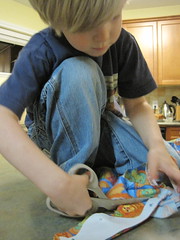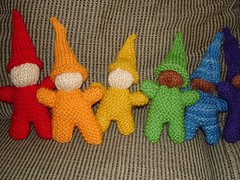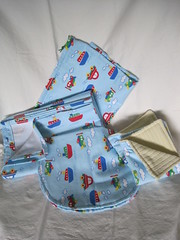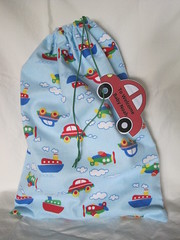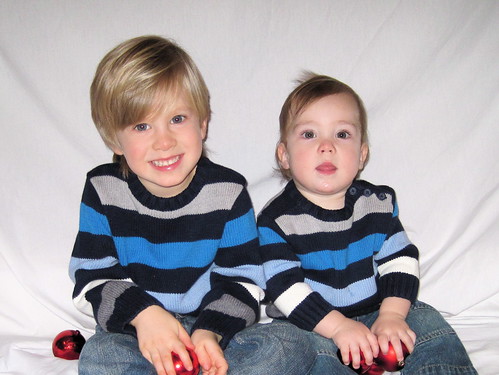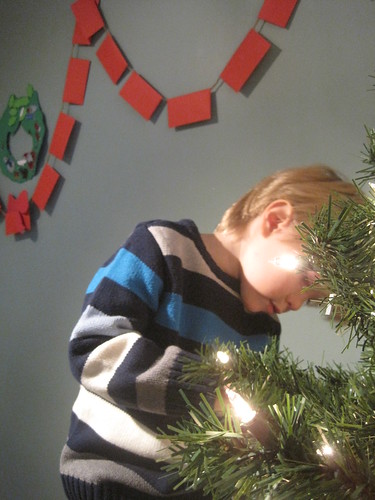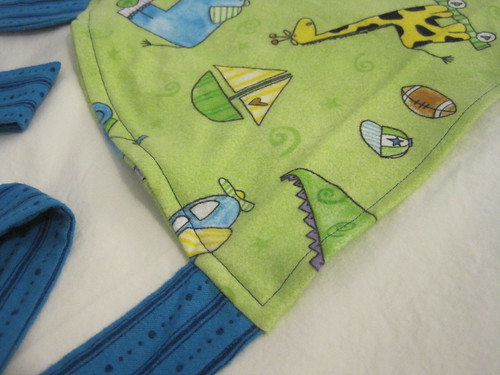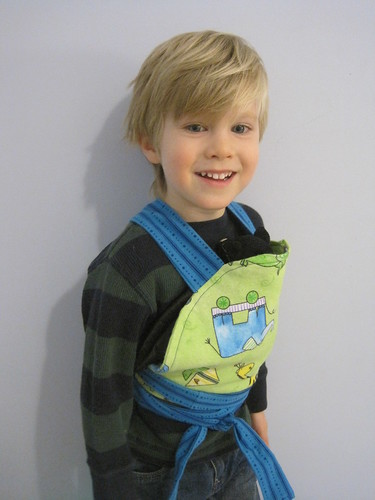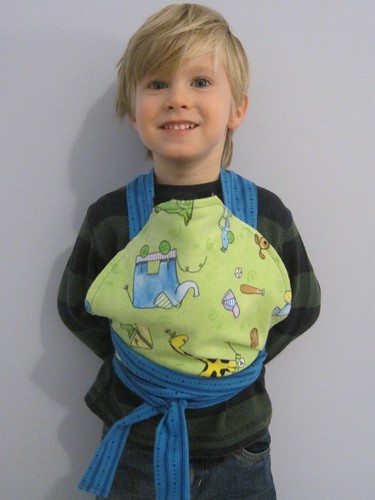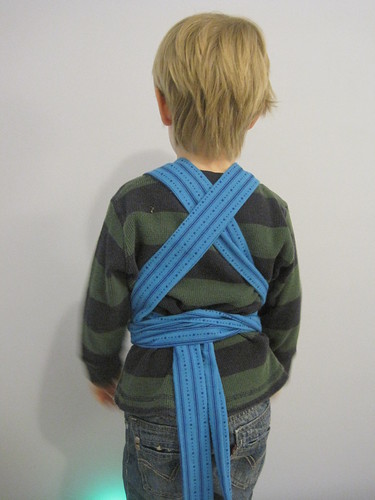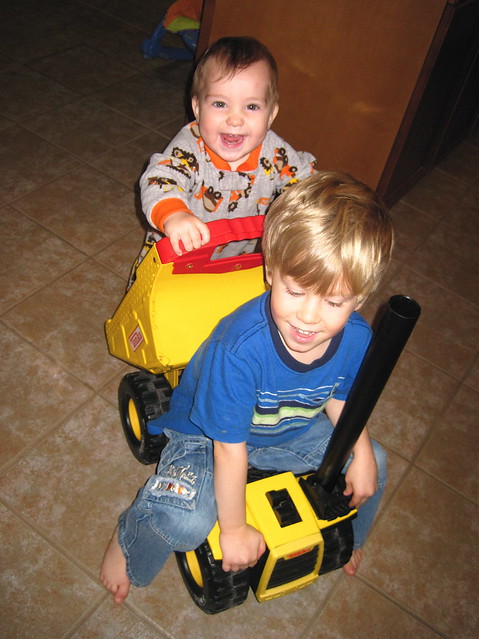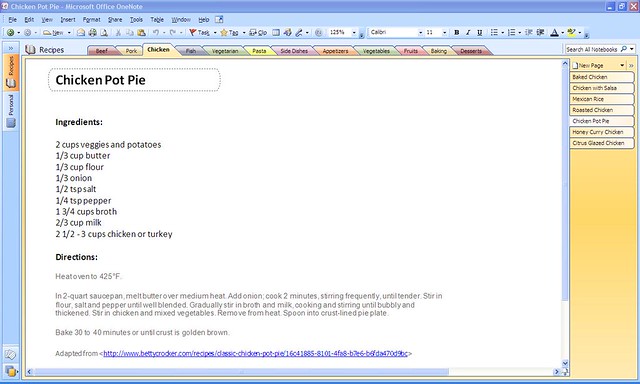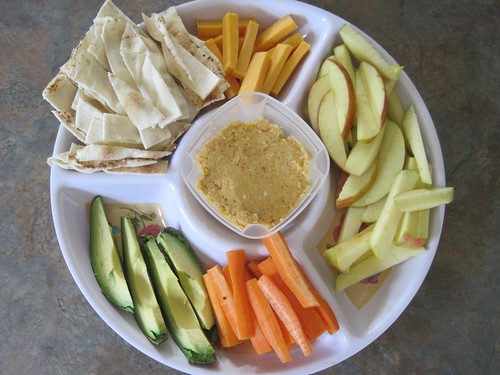It has been a long time since I posted my thoughts on
punishment and
praise. I have been meaning, for at least as long, to also post an entry on the more practical aspect -
the hows.
It is a question I often receive in response to the idea of not using behaviour modification: "All of those whys are great, and I agree with them, but what about the practicalities, the specifics, the hows??"
I get that. I really do. It's all well and good to delve into the myriad of reasons for avoiding punishment and praise...but then what? What can be done instead?
There is no easy answer to that. Each child, each parent, each family, each situation - they're all different. There is no formula, no prescription, no step-by-step manual, no guarantees. That is where so many of the big parenting "experts" fail - "if you just follow our method, and only our method, we guarantee you'll end up with well-behaved children."
Now, that assumes that "well-behaved" is the be all and end all of successful parenting...but I'll try to stay on track. We're dealing with the "hows" today.
I can only share tools that we have found useful in our family. They may not work for you. You may have tools that you have found particularly effective - please share them in the comments! The more tools we have, the better we can parent in a positive, proactive, and connective manner. The less we have, the more we find ourselves merely
reacting to the situations our children inevitably throw our way.
First, the whole mindset for many of us needs to be completely shifted. Many,
many times I hear parents looking for alternatives to punishment. "Well, if I can't punish, what
can I do to deter her from doing that again?" "If the natural or logical consequence isn't unpleasant enough, how is it going to discourage that behaviour from recurring?"
We're not looking for punishment "replacements". We're not looking for consequences to teach them not to do that again.
We're turning the whole thing around. We are
teaching, guiding, discipling. It's hard to step out of that behaviour modification mindset. It is
so ingrained in our society. Punish wrongdoing, praise good deeds, and behaviours will be appropriately modified as a result - that sort of external focus is what we want to leave behind. Instead, we want to
teach our children. Not "teach them a lesson" - but actually
teach them what to do.
Second,
this way isn't easier. It doesn't provide any easy answers, either. It is easy to use external motivation to direct a child's external actions. We're looking deeper here. We're looking for heart-level connection, for internal motivation, for
true obedience above outward compliance. It will involve patience, active parenting, and proactive measures. And it will require as its source a strong parent-child relationship based on mutual love, trust, and respect.
With those two things in mind, let's move on to the hows. These are some tools that have been working for us - not an exhaustive list by any means, but a reasonably good covering of the main ones.
Connect with your Child
None of this can be accomplished without the foundation of a strong, mutually-trusting relationship between parent and child. This relationship begins to develop from birth, as the mother responds to her child's cries and nurtures the bond between them.
Some of the things we do to strengthen that connection right from birth include gentle birth choices, nursing on demand, babywearing, and co-sleeping. As they get older, we connect through one-on-one times, special "just the two of us" outings, lots of reading, a constant flow of conversation, and physical touch (snuggles, hugs, wrestling, and games of chase). Physical touch remains important throughout the years - even a simple hand on a teen's shoulder can reinforce the parent-child connection. Talking, too, remains a priority, and
listening even more so. Finally, we also work to
avoid those things which would undermine our connection and relationship with our children - things like physical or punitive discipline, power struggles, and shaming.
I'd love for you to share some of your methods of connection, too.
With that relationship securely in place, the child will look to the parent for cues on appropriate behaviour. The parent can model this behaviour from the beginning. Model "please", "thank you", and other such manners. Model non-violent conflict resolution. Model healthy boundaries. Model good decision making in all areas of life (time resolution, nutrition, etc), and narrate that process out loud for the child to overhear.
Be Engaged and Consistent
You can't parent from the couch (or the computer chair). Responding appropriately to a situation will often require that I get up and actively intervene. This is particularly important with young children. They need to know that my words mean something. What I say is not optional.
To make this happen, there are three things to keep in mind:
- Stay calm. You are the adult. You are in control of your feelings and reactions. Do not give that power to your children by allowing their behaviour to influence your own feelings.
- Speak at a normal volume. Yelling suggests to children that they don't need to pay attention to your words unless and until you yell.
- Give the instruction once, repeat it with an offer of help, and then get up to help the child follow through if they haven't already. A long string of warnings, threats, badgerings, and pleadings tells a child that they don't need to listen to you the first time. Don't say something if you are unable or unprepared to back it up with action.
Consistency is key. Words must be
consistently followed up with action.
Now, that isn't to say that I expect my children to jump the second I say so. Sometimes a child is in the middle of something and will request a few moments to finish up before putting it away. It is not permissive to respect that request when possible. This is where I find five minute warnings to be useful in helping a child prepare for an upcoming transition. If it is time to leave a fun activity, the opportunity to say good-bye provides a feeling of closure.
But the overall idea is one of consistently ensuring that my words are taken seriously.
One calm instruction followed by
one repeat with an offer of help followed by
getting up to assist the child in carrying the instruction out. This is particularly important with very young children, as it will prevent the need for such "hands on" parenting when they are older. Once they know I mean what I say, they know.
(You can read more about this concept at
Get Off Your Butt Parenting.)
Be Proactive
After consistency, prevention is the biggest thing I can do to ensure my child is able to function at his best. Adequate nutrition and sleep help to set a child up for success throughout the day. The extremes of boredom on one end and over-stimulation on the other are avoided whenever possible. Our ideal is to provide access to a wide variety of activities coupled with as much outdoor time as possible, while avoiding the trap of cramming too many structured activities, events, or errands into one day.
Along those lines, it is important to look to the root of the problem when difficulties arise. Is he hungry? Tired? Lonely? I will solve those issues first (snack, rest, focused attention), and discuss the behaviour itself at a later time when we're both feeling calm. Those calm times are ideal moments to equip our children with the tools they need to handle those feelings in more tumultuous times.
Be Silly
Playful parenting is a great way to coax a resistant child into cooperation. It often breaks the tension and allows the parent to reconnect with the child. It keeps the environment fun, light-hearted and silly. Play can be used to help a child work through their feelings. It can also be a great stress reliever and a reminder not to take things too seriously.
I recall a time, for example, when my frustrated toddler huffed at me. I could have lectured him about manners. I could have sent him to his room to rest until he was feeling more cheerful. If I believed in using violence in parenting, I could have spanked his bottom. Or...I could have huffed back at him. So I did. And he huffed back at me. And I huffed back at him. Soon we were huffing back and forth through a fit of giggles, and both of us were able to cheerfully carry on with our day.
A three week visit to Grandma and Grandpa's house resulted in another perfect example of playful parenting. As was to be expected, the boy was getting a bit grumpy by the end of the visit - a different environment, a different routine, different food, lots of people, and so on. I was sitting at the table with him one evening trying to hold on to my last shred of patience as I dealt with him heading towards a meltdown. Noticing this, his grandpa stepped in to help.
"Do I have to bring out my grumpy monster? This is my grumpy monster
(holds up his hand) and he eats grumpies! Yum yum yum yum yum!"
The boy dissolved into a fit of giggles as his grandpa used his "grumpy monster" to eat/tickle him. It was a wonderful example of my dad using playful (grand)parenting to circumvent what would almost surely have been a complete meltdown in another minute or two.
Avoid Power Struggles
There are situations that warrant explanation and situations where brevity is in everyone's best interest. As always, it is important to know your child. Typically, I will give my child a brief reason for my requests. This allows a child to develop an understanding of
why he should make that decision, rather than an unhelpful "because I said so". My goal is to teach my child
how to think, not merely
what to think.
However, there are many times when engaging with a child will unnecessarily escalate the situation, times when he is simply tired, grumpy, and not at all in a place to accept any explanation. At those times, my responses will be very brief and matter-of-fact. There's no need to dwell on the situation or attempt to convince the child through long explanations. I will not engage in a back and forth
yes!-no!-yes!-no! power struggle with a child, nor will I enforce my instructions with yelling or hitting. Doing so will only undermine my authority as a parent. Remaining calm and to-the-point, I will simply answer and move on. "No, you may not keep your light on. Here is your nightlight. Which CD do you want to listen to?"
Redirection comes into play here as well, particularly with older babies and toddlers. "You may not play with that. Here is this for you to play with." I do not dwell or engage, I simply state my instruction and move on, redirecting the child to an appropriate activity.
When the situation warrants it, I will reflect my child's feelings back to him and, if needed, offer help in expressing those feelings in a healthy, appropriate, and acceptable manner.
Seek Solutions
Sometimes wrongdoings will be done. When that happens, we look for solutions, not punishments. Children grow in maturity and responsibility when they are given the opportunity to fix their mistakes. Punishment actually takes this opportunity away from them.
How this plays out in our home varies depending on the situation. It typically involves making restitution to the wronged party. I will assist him in brainstorming what this restitution may look like, but the bulk of the responsibility (and, of course, increasingly so as he gets older) rests on his shoulders. "You hurt the baby. What can you do to help him feel better?"
There must also be an acceptance of the fact that children are by their very nature not yet mature. They will require repetition in order to form healthy habits. "Try again" is a very common phrase in our home, as a reminder that what they just said was unacceptable and an opportunity for them to restate things in a more appropriate manner.
Safety
Because dangerous situations are often singled out as the situation in which punitive measures are justified or warranted, I wanted to touch on this area separately.
I do not want to spank my child for running into traffic, only to later have him run in the opposite direction from my call, fearing another spank. It is my responsibility to keep my child safe, not his.
I have found that a sharp surprised tone conveys enough "this is absolutely serious" that my child will at least hesitate, allowing me to intervene. I reserve that tone only for situations in which safety is a concern - ovens, fire, traffic, and the like. I do not believe that violence towards children is
ever warranted or acceptable.
Final Thoughts
Discipline is the continuous process of coming alongside the child to teach and guide them into maturity. The idea always is to teach, not punish. This cannot happen in the absence of a healthy, attached relationship between parent and child. With that relationship in place and moments of reconnection continually sought out, we must then be engaged, consistent, and proactive in our parenting. When an issue arises, discipline will show the child what they have done wrong, give them ownership of the problem, give them options for solving the problem, and make use of natural or logical consequences rather than punishment.
Some days we may allow life to get the better of us, snapping at our children or scolding them unnecessarily. This is where it is important that they see humility modeled for them as we come to them and admit we were wrong, sincerely apologize, and ask their forgiveness.
Above all, we must recognise and honour the unique nature of each child, guiding them towards maturity with love and grace.
Additional Resources:
Gentle Discipline for Babies
Gentle Discipline for Toddlers
Attachment Parenting Series
What has been working for you? What situations are you struggling with at the moment? Let's brainstorm positive solutions together!


